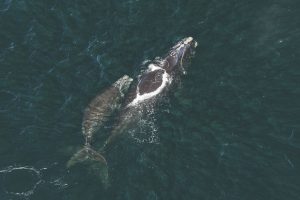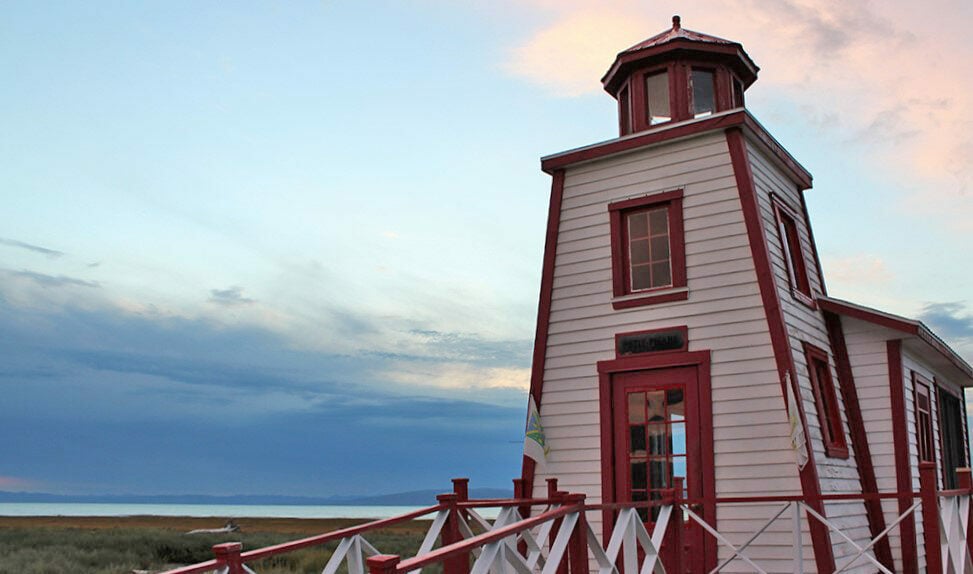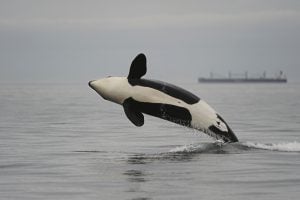
Wildlife
Punctuation’s mark: Can we save the critically endangered North Atlantic right whale?
After a series of mass deaths in recent years, what can we do?
- 4110 words
- 17 minutes
Travel
Following the St. Lawrence’s winding course through Quebec delivers a feast of history, culture and food

“The spell which French Canada exercises over those who visit it for the first time is a potent one. To those who have long lived within its borders it is stronger still, and its strength increases with the passing of the years.”
The preface to Frank Oliver Call’s 1926 The Spell of French Canada instantly grabbed me as my train wound its way out of Montreal, traversing the St. Lawrence river via the Victoria Bridge. Two weeks earlier, I’d discovered a beautiful hardcover copy of the vintage travel guide in a second-hand book store cut out of the back alley-facing wall of the city’s Grande Bibliothèque. The type of store so chock-full of books that it spills out onto the street.
Call’s words struck a chord with me, but the resulting reverberations also triggered guilt. I’d spent nearly five years living in Montreal — and while Quebec’s metropolitan hub had certainly charmed me, I had neglected the rest of La Belle Province. Now, as I tucked into a VIA rail dinner and watched the late summer sun set over the city I’d come to call home, I knew I had the chance to change that.
The plan was a good one. Head north for culture, history and cuisine — then follow the St. Lawrence east and experience maritime Quebec in that sweet spot between late summer and early fall. First stop, Québec City.


The turrets, fortifications and cannons of the UNESCO World Heritage-listed Québec old town are a unique throwback to the old world. So unique that, to find another walled city on this side of the Atlantic, you’d have to travel as far as Mexico. At the doors of Old Québec lies the Hôtel Château Laurier. Here it provides the perfect rest stop, a stylish bridge between a late evening arrival at the nearby Gare du Palais and a morning of old-city exploration.

On a sunny morning in Québec City, there’s only one way to descend the steep 64 metres between the Haute-Ville and Basse Ville: the Old Québec Funicular. In place since 1879, the angled railway tackles the 45 degrees slope at a leisurely pace, giving passengers a scenic and shifting view of the St. Lawrence from up high, followed by a close-up of Old Québec’s most charming neighbourhood.
At ground level, you’re greeted by Rue du Petit Champlain — a pedestrianized street encapsulating Old Québec’s charm, cobblestones underfoot and flanked by colourful eateries artisanal stores. And if you look up, the skyline-dominating extravagance of the city’s emblem, the Fairmont Château Frontenac, pops into view. The perfect place for lunch.
Sam Bistro, one of three restaurants in the Château, offers an excellent mix of fine dining cuisines and elevated classics, such as pulled beef cheek poutine and a generous portion of fish and chips. The wow factor comes from the restaurant’s magnificent views of the St. Lawrence River.
After lunch, it’s time to delve into the city’s history. To get started, step out of the Château Frontenac onto Dufferin Terrace, the long wooden sidewalk offering panoramic views of the river. Below your feet (and the boardwalk) is the Saint-Louis Forts and Châteaux National Historic Site, home to the ruins of the castles and forts that were built since Samuel de Champlain founded the city in 1608. A staircase leads down from the boardwalk into an archeological crypt that houses more than 120 artifacts telling Québec City’s fascinating history.
First-time visitors should also be sure to check out the Fortifications of Québec National Historic Site that helped earn Québec its UNESCO World Heritage Site status. Take a tour with a Parks Canada guide along a five-kilometre path atop the city’s various fortifications. The views of Québec’s numerous iconic landmarks are hard to beat, as are the entertaining anecdotes on the city’s military history and periods of French and English rule.
For dinner, try Bello Ristorante in Old Québec for authentic Italian cuisine in an old-world setting.

The 6:30 a.m. ferry from Québec across the river to Lévis is a fantastic way to get one more memorable glimpse of the city’s impressive skyline. You’ll be left with plenty of time to take in the sights on the 400 kilometre drive to Rimouski. If leaving later in the day, consider pit stopping at Hôtel Universel in Rivière-du-Loup — I recommend grabbing a club sandwich and poutine (plus a round of “golf”) at classic Québécois diner, Casse-Croûte Mini-Putt.
If time is your friend, drive the more scenic Route 132 along the riverfront, taking in the sights as you go. Be sure to stop at Saint-Jean-Port-Joli, famous for its abundance of artesian wood carvers. Then, a stop at the picturesque Petit Phare (little lighthouse), a faux lighthouse in Saint-André-de-Kamouraska that offers brilliant views across the St. Lawrence. A rose bush-lined path leads you to the Wes Anderson-esque lighthouse, where a red door reveals a cozy sitting room inside.

After a quick bite to eat in Rivière-du-Loup, set your sights on Bic National Park for an afternoon of stunning mountains, coastal scenery and hidden coves. Just an hour’s drive from Rivière-du-Loup, Bic is one of the province’s most underrated parks. Known as a common spot to sight harbour and grey seals, it’s also home to excellent hiking trails. Read more about the adventures available to you here.
At sunset, take the short drive to Rimouski, where you’ll stay for the night. Hotel Rimouski is ocean-front offering grand views of the sun setting over the St. Lawrence, which has widened dramatically from the river that guided me out of Montreal.

After a full day of driving and hiking, time for a change of pace. After grabbing breakfast, head to the Pointe-au-Père Maritime Historic Site. This site is a triple threat of history, home to the Pointe-au-Père Lighthouse National Historic Site, The Empress of Ireland Museum and The Onondaga submarine. Each gives its own unique perspective of maritime Quebec history, and all are worth a visit.
The Pointe-au-Père Lighthouse was built in 1909, and is the second tallest in Canada and one of the few to have its prism still. Learn its history with a guided tour and visit the exhibition showcasing the lighthouses of the St. Lawrence through photography and scale models.
Next, walk over to the Empress of Ireland Museum. One of Canada’s worst maritime disasters, the RMS Empress of Ireland sank in only 14 minutes following a collision in heavy fog. Over 1,000 souls were lost. The museum guides guests through the story in reverse order, from the numerous dives to the shipwreck, to the ship’s tragic sinking in 1914, to its construction in 1906.
Finally, head over to the HMCS Onondaga submarine — my favourite experience of the three sites — where you can actually board the Oberson-class submarine that once served in the Royal Canadian Navy. You’ll gain a real appreciation for what it’s like to live and work on board a submarine — and that it isn’t for the faint of heart. If you’re really brave, book an overnight stay aboard the submarine, where you will be welcomed by the coxswain and asked to play the role of an apprentice submariner as you complete various immersive tasks.
You should have enough time left in your day to hit the road again. Thirty minutes later, you’ll find yourself in Grand-Métis, where the Mitis River meets the St. Lawrence. In fact, the town’s name comes from a Mi’kmaq word meaning “meeting place.”

Grand-Métis is home to the Jardins de Métis, also known as Reford Gardens, one of Canada’s most outstanding horticultural attractions. Open from early June to early October each year, the gardens were created between 1926 and 1958 by avid gardener Elsie Redford. They boast a huge variety of native and international plants and host the splendid and interactive International Garden Festival each year.
The Gardens are also a great place to eat, with three farm-to-table restaurants featuring dishes inspired by the garden’s vegetables and local flavours. You can even stay the night, with two accommodation options located in the gardens listed on Airbnb.
A short drive west is the Centre d’Art Marcel Gangnon. Famous for its eerie statues of armless figures spreading down the shore and into the ocean, the spot is perfect for sunset photography. Try to be there at low tide for full effect.
It’s at this point you have to make a decision. Grand-Métis is where Route 132 splits. QC-132 West takes you on to New Brunswick, and its eastern counterpart takes you on to Quebec’s Gaspé Peninsula.
If you need to be back in Québec City, then it’s time to turn around. But don’t worry, there’s still plenty more to do!

You can’t visit the Bas-Saint-Laurent without experiencing the magic of whale watching. The season runs from mid-May to the beginning of October, with June to September the best time to see some cetaceans. Many excursions leave each day from Rimouski, Trois-pistoles, and across the river from Tadoussac, typically lasting around three hours. Species in these waters include minke whales, humpback whales and even blue whales. Their abundance is owed to the St. Lawrence estuary’s plentiful sources of food, such as krill. Check this interactive map during whale watching season to see what species are currently in the region.
It’s also possible to have a more intimate whale encounter by taking a kayaking tour from Tadoussac. The boats move almost silently through the water, minimizing any potential disturbance to the whales. Tours are offered as both full and half-day trips.
If you choose to begin your whale-watching adventure in Tadoussac, take one of the regular ferries from Trois-Pistoles to Les Esoumins, a 25-minute drive from Tadoussac.

With four fun-filled days exploring Quebec already in the bag, it’s time to head home. The drive from Rimouski can be done in less than four hours — but why rush? There are plenty of charming villages and sites to see on the route back to Québec City. Highlights include the Fromagerie des Basques in Trois-Pistoles, famous for their salted and flavoured cheese curds as well as their breads and pastries. Just off the coast is Île aux Basques, occupied on multiple occasions by basque whalers and fishermen from 1584 to 1637. The island is designated as a National Historic Site of Canada.
Another gourmet stop of note is La Fée Gourmande in Kamouraska, an immensely popular chocolate factory and shop. Kamouraska itself has a claim to being one of Quebec’s most beautiful villages. The main street is lined with charming boutiques and 19th-century architecture, and the views of the river from the wharf are stunning.
Eventually, you will find yourself back in the warm embrace of Québec City. From here, you have multiple options to reach your final destination, with the Québec City Jean Lesage International Airport serving much of North America and Europe and VIA Rail offering regular services to Montreal and beyond.
For one last night in the city, consider staying at the luxuriously quirky Monsieur Jean Hotel. There is something Willy Wonka-ish about the hotel, from the playful decor and bow-tied rubber ducks found in each room to the machine in the lobby that prints a unique short story for each guest (mine was titled Noodles for Breakfast).
As I rest in my hotel room at the end of my trip, weary yet refreshed, I thumb through the final pages of The Spell of French Canada. A lot has changed in the century since he wrote it, but French Canada’s spell is the same. Church bells can be heard ringing in the distance — in symphony with Frank Oliver Call’s closing words:
Whether harsh or musical, the inhabitant of Quebec loves their [church bells’] ringing, for it is the voice of French Canada that comes floating over broad rivers, green fields, or white expanse of snow, where on may, at any time, slip back into the past or seek new adventures.
Are you passionate about Canadian geography?
You can support Canadian Geographic in 3 ways:

Wildlife
After a series of mass deaths in recent years, what can we do?

Wildlife
Whales are beginning to return to B.C. waters — but will they find a safe haven?

Wildlife
In shedding light on wolverines’ aversion to roads, new research suggests the key to their conservation in Alberta

Wildlife
When one of the few remaining females of reproductive age in the southern resident population of North Pacific killer whales was found dead near Comox B.C. in 2014, an investigation was launched. The results highlight the challenges of protecting our most iconic marine mammals.